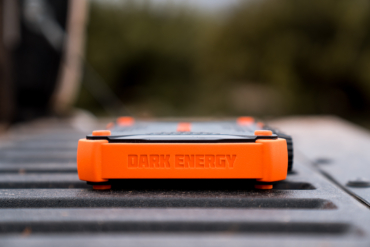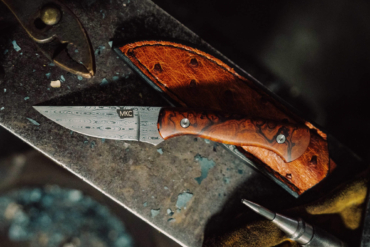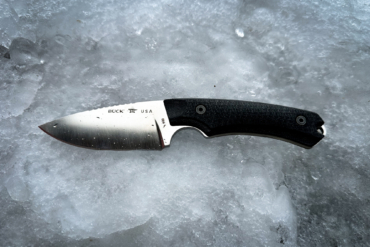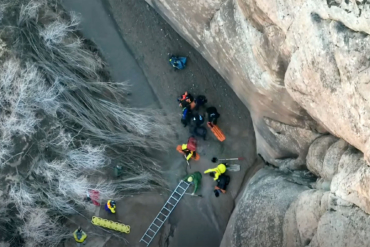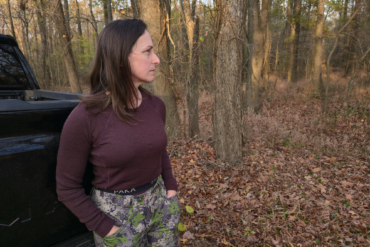Moultrie Mobile designs trail cameras for hunters. The brand’s Edge Pro cellular camera gives users control over what triggers a photo and whether or not they receive them over a cell network, according to the brand.
At its most dialed, Moultrie says you can choose buck-only photos and then get photos of only bucks that walk past your camera.
Targeting certain species and exempting parts of the camera’s screen from triggering photos should greatly reduce the time spent looking at images of squirrels, feeders, or even passing traffic. This efficiency means the camera should use fewer batteries too.
Read on to learn about the specs and how hunter and photographer Blake Garrett uses the Edge Cam Pro system out in the field.
Shop the Moultrie Mobile Edge Pro
Trail Cams as Scouting Companions
Blake Garrett is a Missouri-based hunter and photographer who has watched trail camera technology grow since the first device iterations. These used bulky batteries and film. He’s since come to follow, and favor, Moultrie Mobile.
“I think they stand out, hands down, over the competition for what they’re doing to change the game,” he said.
On average, Garrett hunts across four states, with hunting properties within a 5-hour drive from each other. Each spot has cellular trail camera setups.
“We’ll kind of just base the whole season off of those cameras and what’s going on in those areas,” Garrett said.
“If we’re in Missouri and the rut’s really kicking in western Kansas, and we’re getting a ton of daylight photos of bucks or the buck we’re after, we’ll jump in the truck and head out there for a couple of days and give him some sets just because he’s messing up and we can maybe capitalize on that.”
The Edge Pro Difference
When you turn on the Edge Pro, it scans for the strongest cellular signal in that area and automatically connects to it. According to Moultrie, It works with any of the four major providers. And, thanks to its built-in memory, there’s no need to figure that out or switch SD cards like other trail cameras.
The Moultrie Mobile app will let you get the most from the camera. It has a Live View during camera setup to show you what will be in the frame. It lets you select parts of the screen you want to exclude from motion sensors as well as select which animals (or cars or people) will trigger photos, the brand says. Likewise, the app lets you decide how often you are sent images and whether you’d like push notifications.
These cellular cameras are also effective for security, according to the brand. The cameras don’t run on electricity, so they can keep an eye out on remote cabins or access gates.

Fighting False Triggers
False trigger images eat up a camera’s memory space and waste your time sorting through them.
Moultrie Mobile claims the false trigger elimination tech in the Edge Pro reduces false triggering by up to 99% and identifies the intended species with up to 96% accuracy. In other words, if you’re looking out for a trophy buck, you’ll only need to sift through photos of bucks.
Artificial intelligence drives this Smart Capture ability and lets you adjust which species you want it to capture. You can even select between does and bucks. In all, the app lets you turn on or turn off captures for these categories: deer, buck, doe, turkey, boar, vehicle, or person. Four more options in beta testing are bobcat, coyote, bear, and hog.
Before the season, Garrett has his cameras send photos in 6-hour batches and reserves more immediate push notifications for alerts of car or human activity on his hunting properties. That changes once deer season sets in.
Then, he sets the Smart Capture to notify him of bucks more often. Once their behavior patterns change from the hot weather, he’ll add custom tags to identify and track particular bucks and find patterns among data of temperatures and moon phases.

Smart Zones
Another customizable setting of the Edge Pro camera is Smart Zones. According to Moultrie, this lets you select among 25 segments of the camera’s view and turn off their motion detection. That way you can set up a camera along the edge of a cornfield or near an overhanging limb and set the motion detection to ignore those natural features on the edge of the view.
Like selecting a specific species for the hunting camera, you can also program it to look out for only cars or people. Similarly, Smart Zones lets you deselect, say, a road past your gate or driveway at the top of a screen, so only cars or people entering your property trigger photos. These alerts can be set to Immediate Upload so an image is sent to your phone as it’s triggered.
Garrett predicts this feature will come in handy this fall. “It never fails — you get on a good scrape, and a buck comes through and breaks the limb off. And it’s now swinging in front of your camera any time the wind blows. Instead of having to go back and put more scent into that area and disturb it, you can just block the limb out and still get pictures,” he said.

Moultrie Mobile Edge Pro Highlights
- Cellular auto-connect
- Internal memory system
- Smart Capture species-specific photo triggers
- Smart Zones exempts portions of the camera from motion detection
- 50-degree field of view
- Motion trigger and IR work out to 100 feet
- 36MP images and 1,080-pixel HD video, day and night
- Image and video access via the Moultrie Mobile app
- Runs on a battery pack (8 or 16 AA) for up to 12 months
- MSRP $180
Moultrie Mobile App
All images and videos are sent to the Moultrie Mobile app where you can browse them in the gallery.
During setup, the app’s Live Aim gives you a real-time view from the camera. This lets you adjust it to capture everything you want (or don’t want) in view, Moultrie claims.
“Gone are the days where you’d set up the camera and wait to gauge distance and composition based on the first photos that roll in. With the Edge Pro’s Live Aim feature, you can set it up right there within seconds,” Garrett explained.
Curious to see how the Edge Pro works in the wild? You can download the app and use the demo mode without committing to a plan. You’ll be connected to demo cameras the brand has set up in different areas.
Solar Accessories

Perhaps the accessory with the most return on investment is the forthcoming Universal Solar battery pack. It can provide more power than traditional solar panels and runs uninterrupted to reduce the draw on the camera’s batteries, Moultrie says.
For remote cameras in cold locations where the cameras need lithium AA batteries to run, a replacement of 16 batteries can cost $80. But the Universal Solar battery pack can use AA batteries as a backup only, which should offset its $100 price tag.
Another way to extend the battery life of your trail camera is the 12V rechargeable Dual Solar Battery Box. It has two solar panels that can fast charge even in areas with only moderate sunlight, according to the brand.
Trail Cam Photo Tips
“My whole thing is I always want to be able to show people the full capabilities of the camera if you run it right,” Garrett said. “It’s a matter of learning that camera for the width, the angle, how much field of view it has in the picture, and learning the sensors and how it auto-sensors things for nighttime and daytime pictures.”
To help find a sweet spot depth for a camera, Garrett sets up a line of feed from 4 to 15 feet in front of the camera. As the deer works the feed, he gets shots of it closer and farther from the camera to get an idea of the best distance for that camera. Ideally, that includes day and night photos.
Garrett sets his trail cameras about as high as his waist or mid-thigh to capture the best photos. That should be about eye level with a deer that’s got its head up, but not in a state of alert. The angle is straight on or a slight tilt down. Hanging cameras too high creates a background of, well, just the ground. Conversely, setting the angle too low and the sky predominates the background, often washing out the image, he said.
Check out the Moultrie Mobile Edge Pro trail cam for more details and — if you’re so inclined — try it for yourself.
Shop the Moultrie Mobile Edge Pro
This article is sponsored by Moultrie Mobile. Check out the Moultrie site for more on the Edge Pro cellular trail camera and accessories.

